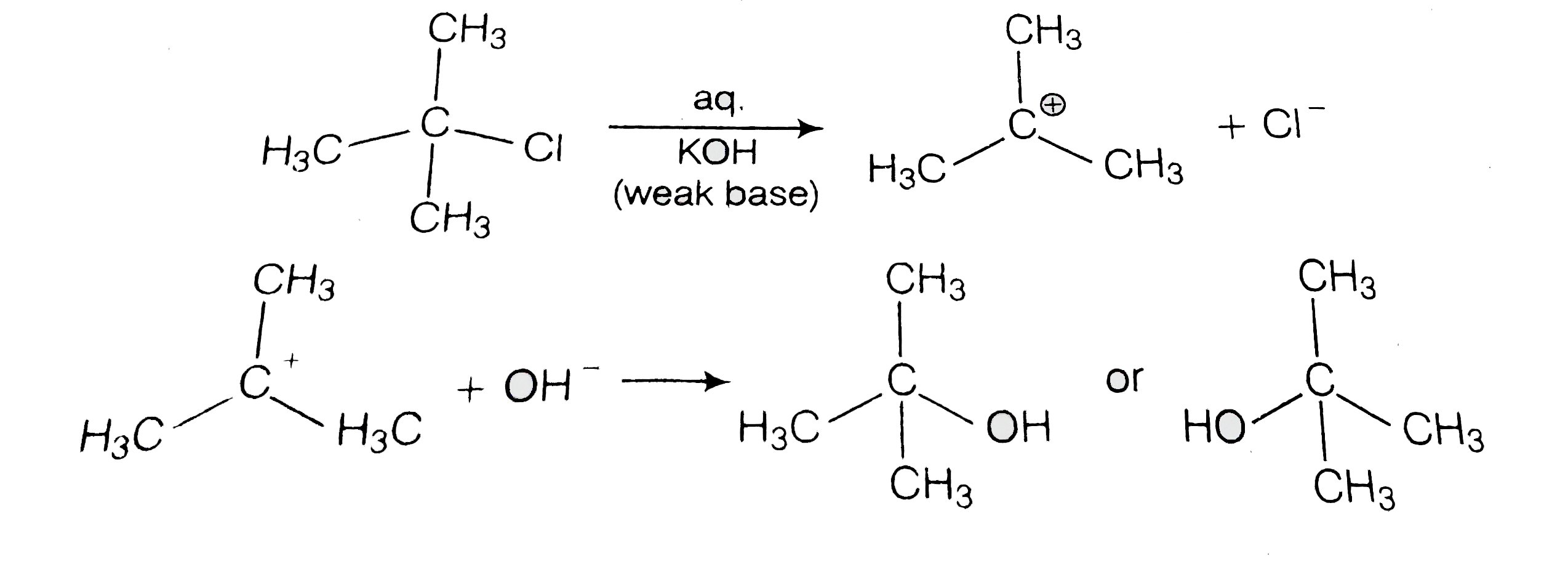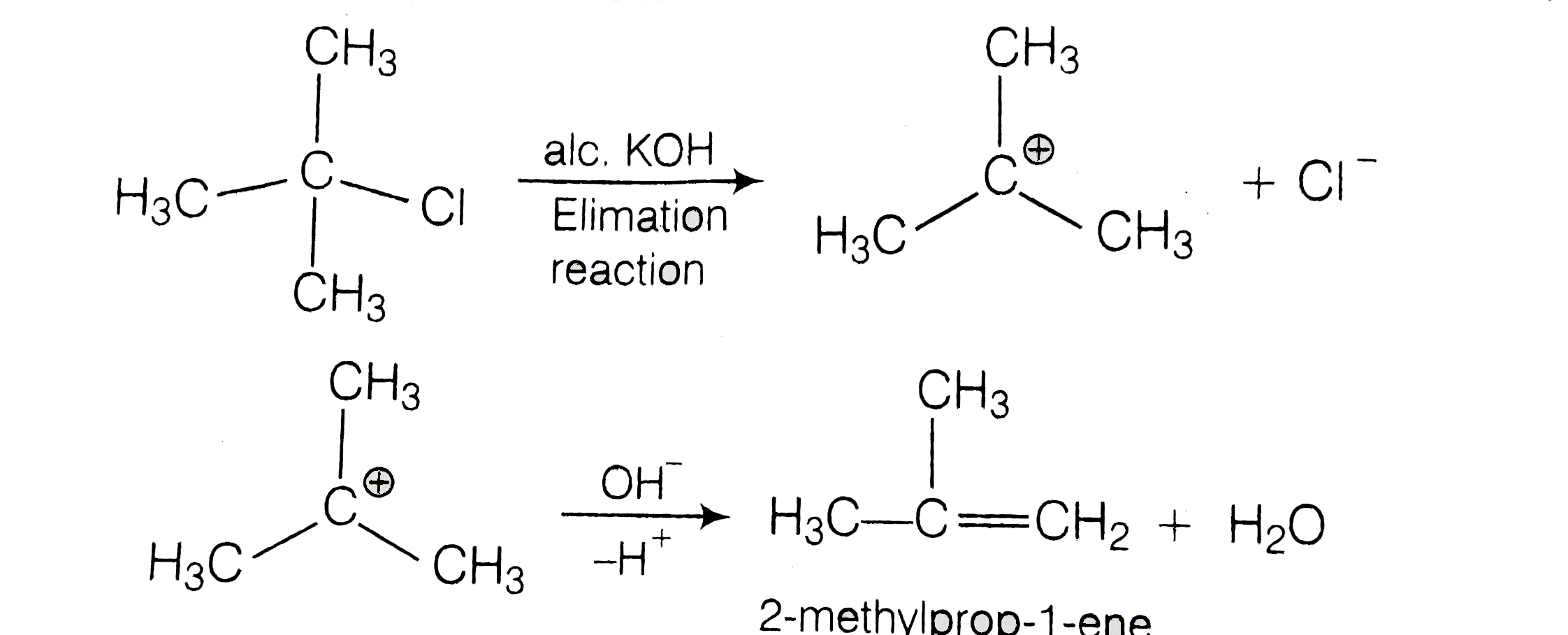Some alkyl halides undergo substitutionn whereas some undergo elimination reaction on treatment with bases. Discuss the structural features of alkyl halides with the help of examples which are responsible for this difference.
Primary alkyl halides follow SN2 mechanism in which a nucleophile attacks at 180∘ to the halogen atom. A transition state is formed in which carbon is bonded to two nucleophiles and finally halogen atom is pushed out. In SN2 mechanism, substitution of nucleophile takes place as follows

Thus, in SN2 mechanism, substitution takes place. Tertiary alkyl halides follow SN1 mechanism. In this case, tert alkyl halides form 3∘ carbocations. Now, if the reagent used is a weak base then substitution occur while if it is a strong base than instead of substitution elimination occur.

here the reagent used is aq. KOH. It is a weak base so, substitution takes place.

As alc. KOH is a strong base, so elimination competes over substitution and alkene is formed
Topper's Solved these Questions
- GENERAL PRINCIPLE AND PROCESSES OF ISOLATION OF ELEMENTS BOOK - NCERT EXEMPLARCHAPTER - GENERAL PRINCIPLE AND PROCESSES OF ISOLATION OF ELEMENTS EXERCISE - General Principle And Processes Of Isolation Of Elements
55 Videos
- P-BLOCK ELEMENTSBOOK - NCERT EXEMPLARCHAPTER - P-BLOCK ELEMENTSEXERCISE - P-Block Elements
72 Videos
Similar Questions
Some alkylhalides undergo substitution whereas some undergo elimination reaction on treatment with bases discuss the structural features of alkyl halides with the help of examples which are responsible for this difference.
View SolutionSome alkyl halides undergo substitution reaction whereas some undergo elimination reaction on treatment with bases. Discuss the structural features of alkyl halides with the help of examples which are responsible for this difference.
View Solution
Knowledge Check
All alkyl halides undergo reduction process except
AfluoridesBchloridesCiodidesDbromidesAll alkyl halides undergo reduction process except
AfluoridesBchloridesCiodidesDbromidesAlkyl halides undergoing substitution nucleophilic bimolecular reaction involves
AFormation of carbocationBRacemic mixtureCInversion of configurationDRetention of configuration
Give an example of β -elimination reaction of alkyl halides.
View SolutionGive an example of β -elimination reaction of alkyl halides.
View SolutionIn the elimination of reactions, that is, in the formation of alkenes, the reactivity of halogens in alkyl halides in the the order-
View SolutionWhich of the reaction are most common in alkyl halides
View SolutionThe alkyl halide that undergoes SN1 reaction more readily is
View Solution
